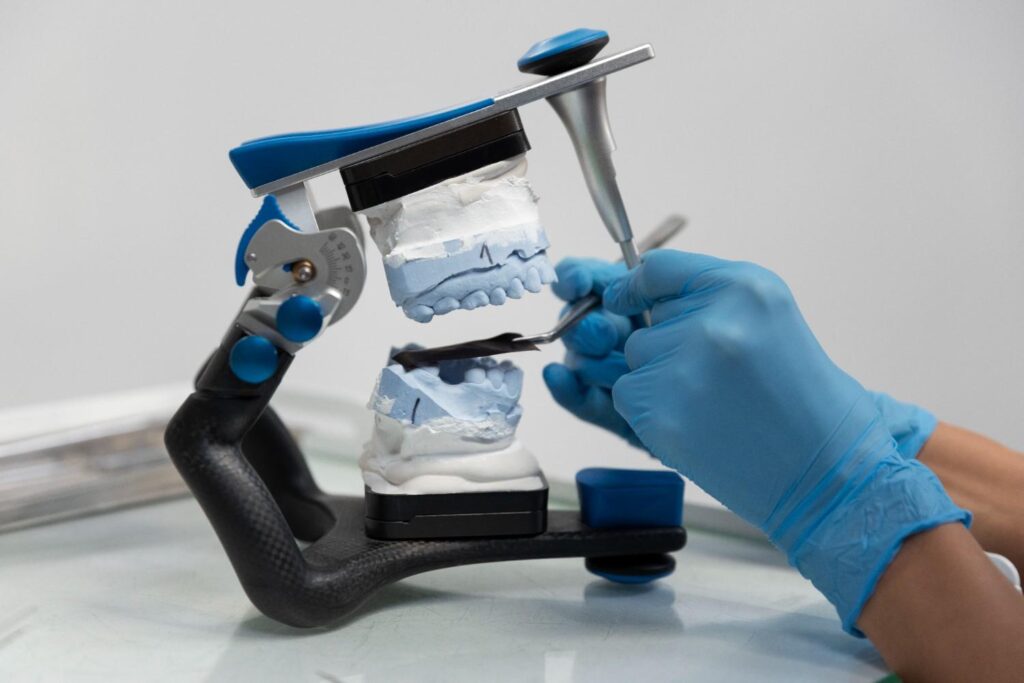A visit to the dentist for a crown or bridge once meant multiple appointments, messy impressions, and a temporary restoration that didn’t always fit. This time-consuming process is quickly becoming a thing of the past, thanks to the remarkable advancements in 3D printing technology.
The Benefits of 3D Printing in Tooth Restoration
The shift from traditional methods to 3D printing is driven by several key advantages that enhance the quality of care and improve the patient experience.

Accuracy and Precision
Traditional dental impressions can be prone to human error and material distortions, leading to restorations that require significant manual adjustments. 3D printing, however, starts with a highly accurate digital scan of the patient’s mouth. This digital model allows dentists to design restorations with microscopic precision, ensuring a perfect fit that feels natural and functions correctly from the moment it’s placed.
Speed and Efficiency
What used to take weeks can now often be accomplished in a single day. 3D printing technology allows dental labs and even in-office clinics to produce crowns, bridges, and other restorations on-site. This rapid turnaround eliminates the long wait times associated with sending impressions to an external lab, reducing the number of patient visits and the need for temporary fixes.
Unmatched Customization
Every mouth is unique, and 3D printing embraces this fact. The technology enables the creation of highly customized restorations tailored to the specific anatomy and aesthetic needs of each patient. Dentists can fine-tune the shape, size, and color of a restoration to blend seamlessly with the patient’s existing teeth, resulting in a more natural and cosmetically pleasing outcome.
Cost-Effectiveness
While the initial investment in 3D printing equipment can be substantial, the long-term savings are significant. Automating the production process reduces manual labor costs and minimizes material waste. These efficiencies can make advanced dental treatments more affordable and accessible to a broader range of patients.
The 3D Printing Process for Tooth Restoration
Creating a custom dental restoration with 3D printing involves a streamlined, four-step digital workflow.

1. Scanning and Digital Design: The process begins with an intraoral scanner, a small, handheld device that captures thousands of images per second to create a precise 3D digital model of the patient’s teeth and gums. This replaces the need for goopy physical impression trays. Using specialized CAD (Computer-Aided Design) software, the dentist or technician then designs the custom restoration—be it a crown, veneer, or bridge—directly on this digital model.
2. Material Selection: The next step is choosing the right material for the job. 3D printers can work with a variety of biocompatible materials, including resins, ceramics, and metal alloys. The choice depends on the type of restoration, its location in the mouth, and the required strength and aesthetic properties.
3. Printing the Restoration: Once the design is finalized and the material is selected, the digital file is sent to the 3D printer. The printer builds the restoration layer by layer, a process known as additive manufacturing. Depending on the complexity of the piece and the technology used, this can take anywhere from a few minutes to a few hours.
4. Post-Processing: After printing, the restoration undergoes post-processing. This may involve washing away excess resin, curing the material with UV light to achieve its final strength, and polishing the surface to a smooth finish. For some restorations, staining and glazing may be applied to perfect the color match with the patient’s natural teeth.
Types of 3D-Printed Restorations
3D printing technology is versatile enough to produce a wide array of dental restorations.

Crowns and Bridges
3D-printed crowns and bridges offer a durable and aesthetically pleasing solution for damaged or missing teeth. The precision of the technology ensures a tight seal, which helps prevent future decay and protects the underlying tooth structure.
Veneers
For patients looking to improve the appearance of their smile, 3D-printed veneers provide a minimally invasive option. These thin shells are custom-designed to fit over the front surface of teeth, correcting issues like discoloration, chips, or gaps with remarkable accuracy.
Implants
3D printing plays a critical role in modern implant dentistry. It is used to create highly accurate surgical guides that help dentists place dental implants in South Jordan and other communities with exceptional precision. This improves the safety and predictability of the procedure. Additionally, the technology can be used to fabricate the final custom abutments and crowns that attach to the implants.
Challenges and Future Considerations
Despite its many advantages, the widespread adoption of 3D printing in dentistry still faces a few hurdles.
- Material Limitations: While the range of available materials is growing, research continues to focus on developing new options with enhanced durability, longevity, and aesthetic qualities to rival traditional materials in all situations.
- Equipment Cost: The initial investment for high-quality 3D printers and scanners can be a significant barrier for smaller dental practices. However, as the technology becomes more mainstream, prices are expected to decrease.
- Training and Expertise: Effectively integrating a digital workflow requires specialized training for dentists and their staff. Mastering the scanning, design, and printing processes is essential to harnessing the full potential of the technology.
Conclusion
The role of 3D printing in dentistry is set to expand even further. We are on the cusp of seeing biocompatible materials that can actively promote tissue regeneration and printers capable of creating multi-material restorations with varying degrees of hardness and flexibility, just like a natural tooth.





